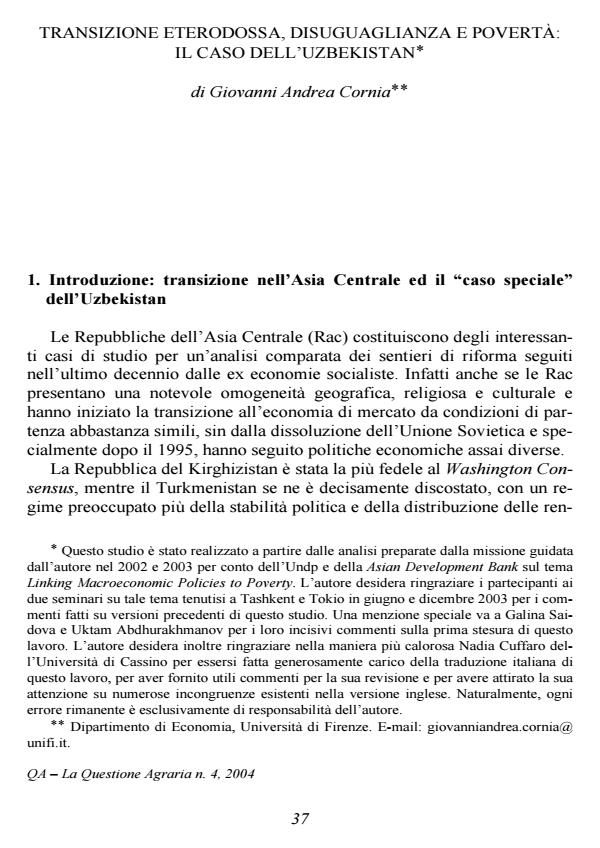Transizione eterodossa, disuguaglianza e povertà: il caso dell'Uzbekistan
Journal title QA Rivista dell’Associazione Rossi-Doria
Author/s Giovanni Andrea Cornia
Publishing Year 2005 Issue 2004/4
Language Italian Pages 40 P. File size 308 KB
DOI
DOI is like a bar code for intellectual property: to have more infomation
click here
Below, you can see the article first page
If you want to buy this article in PDF format, you can do it, following the instructions to buy download credits

FrancoAngeli is member of Publishers International Linking Association, Inc (PILA), a not-for-profit association which run the CrossRef service enabling links to and from online scholarly content.
Heterodox Transition, Income Inequality and Poverty: The Case of Uzbekistan - While the heterodox approach to the transition followed by Uzbekistan has often been critcized, the results is achieved in containing the transitional recession and restarting growth appear to have been superior to those obtained by other Central Asian Republics which followed a more liberal approach. In this sense, the Uzbek approach can be defined as the best second best given the adverse cirtcumstances under which the transition took place. In contrast, the development model inspired by the import substituting industrialisation followed since 1996 has produced less satisfactory results, mainly owing to the negative distributive effects it produced and that have indirectly retarded both growth and poverty reduction.
Giovanni Andrea Cornia, Transizione eterodossa, disuguaglianza e povertà: il caso dell'Uzbekistan in "QA Rivista dell’Associazione Rossi-Doria" 4/2004, pp , DOI: